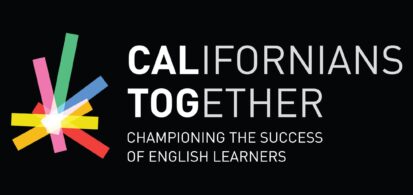Yesterday, Governor Newsom presented his proposed state budget that includes a $291.5 billion spending plan and an expected $37.86 billion shortfall. The overall theme of the press conference was more hopeful than what we had seen in the past few months. The Legislative Analyst Office projected a $68 Billion shortfall as of last month, but the governor made it clear that this projection should be adjusted. As part of his budget proposal to address the shortfall, the governor includes $18.8 Billion of reserves and revenue borrowing, $11.9 Billion in reductions or fund shifting, and $7.2 Billion of delays or deferrals. Despite budget shortfalls, Governor Newsom expressed his continued commitment to addressing various critical areas, including the homelessness crisis, mental health reform, public safety, TK-16 and career technical education, climate change, and maintaining California’s place in the global economy
We appreciate the governor’s commitment to education, specifically the ongoing commitment to Universal Transitional Kindergarten, universal school meals, before/after school programs, and the LCFF Equity Multiplier.
We applaud Governor Newsom’s continued commitment to expanding the educator pipeline, taking into account the need for a prepared, trained, diverse and multilingual workforce even with the budget shortfall we face. It’s a true testament to ensure his focus on education, and we will continue to push so that these cuts do not affect the most vulnerable students.
Areas of interest for Californians Together:
Local Control Funding Formula (LCFF):
- The budget includes an LCFF cost-of-living adjustment (COLA) of 0.76 percent. When combined with population growth adjustments, this will result in a decrease of roughly $1.4 billion in discretionary funds for LEAs. However, to fully fund the LCFF and to maintain the level of current year principal apportionments, the budget proposes withdrawing approximately $2.8 billion from the Public School System Stabilization Account (PSSSA) to support ongoing LCFF costs in 2023-24, withdrawing approximately $2.2 billion from the PSSSA to support ongoing LCFF costs in 2024-25, and using available reappropriation and reversion funding totaling $38.6 million to support ongoing LCFF costs in 2024-25.
Teacher Preparation and Professional Development:
- The budget includes several proposals intended to support teachers and improve access to the educator pipeline. This includes recognizing completion of a bachelor’s degree as satisfying the basic skills requirement for a credential and improving transcript review to certify subject matter competency.
- The 2023 budget required LEAs to begin screening students in kindergarten through second grade for risk of reading difficulties, including dyslexia, by the 2025-26 school year. To support training for educators to administer literacy screenings, the budget proposes $25 million ongoing Proposition 98 General Fund through the K-12 Mandate Block Grant.
- Mathematics Framework – The budget proposes $20 million one-time Proposition 98 General Fund for a county office of education to work with the University of California Subject Matter Projects, as well as, other well-qualified governmental or non-profit providers, to develop and provide training for mathematics coaches and leaders who can in turn provide training and support to math teachers to deliver high-quality instruction.
- The administration is engaging in a 13-month planning process to investigate how existing policies, investments, and structures can be improved, culminating in the Governor’s Master Plan for Career Education scheduled for publication in the winter of 2024.
Instructional Continuity:
- The proposed budget includes statutory changes to allow LEAs to provide attendance recovery opportunities to students to make up lost instructional time, thereby offsetting student absences, and mitigating learning loss and chronic absenteeism, as well as, related fiscal impact
- Includes hybrid or remote learning
- For ADA purposes: Attendance recovery programs can take the form of Saturday school, intersessional school, or before/after school, and would be exempt from minimum day requirements.
- Support to enroll at a neighboring school for emergencies lasting 5 days or more
- $6 Million one time Prop 98 funds to research hybrid models and remote learning as well as recommendations to allow LEAs to report on student absence
Cradle-to-Career Data System
- An increase of $5 million ongoing Proposition 98 General Fund to support the California College Guidance Initiative.
Nutrition
- An increase of $122.2 million ongoing Proposition 98 General Fund to fully fund the universal school meals program in 2024-25. Over 845 million meals are projected to be served through this program in 2024-25.
Broadband Infrastructure Grant
- An increase of $5 million one-time non-Proposition 98 General Fund to extend the program through 2029. The initial funding for this program was one-time through June 30, 2024. In addition to providing fiber broadband connectivity to the most poorly connected school sites, this funding would also be available for joint projects connecting schools, local libraries and telehealth providers to high-speed fiber broadband.
K-12 High Speed Network
- An increase of $3.2 million ongoing Proposition 98 General Fund to support the K-12 High Speed Network program.
We will continue to work with the governor, his administration, and the legislature to incorporate funding that prioritizes the state’s 1.1 million English learners. We stand firm that every child should have full access to a high quality 21st Century education and to graduate from our public schools fully prepared for success in college and career and full civic participation. It is our goal for every student to possess cross-cultural skills and knowledge, connections to their families and communities, informational and technological literacy, and communication and literacy skills in more than one language.
